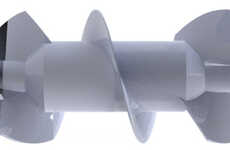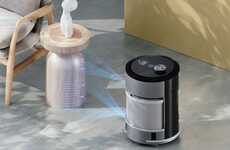
These Tiny Underwater Robots Can Suck Pollutants Out of Water
Mishal Omar — May 4, 2016 — Eco
References: pubs.acs.org & yahoo
The issue of contaminated water has come to the forefront since crises such as the one seen in Flint, Michigan, and there may be a solution in underwater robots cleaning water.
These tiny robots are able to suck pollutants such as lead out of industrial waste water that has been known to make people sick. Each of these robots are tube-shaped and smaller than the width of human hair. In only an hour, thousands of these robots working together can remove 95% of the lead in the water they are placed in.
Once the graphene-based microbots have filled up with lead, they are removed from the water using a magnetic field, and once treated with an acidic solution that removes pollutants, they can be reused.
These tiny robots are able to suck pollutants such as lead out of industrial waste water that has been known to make people sick. Each of these robots are tube-shaped and smaller than the width of human hair. In only an hour, thousands of these robots working together can remove 95% of the lead in the water they are placed in.
Once the graphene-based microbots have filled up with lead, they are removed from the water using a magnetic field, and once treated with an acidic solution that removes pollutants, they can be reused.
Trend Themes
1. Water-cleaning Microbots - The development of small robots capable of removing pollutants from water presents disruptive innovation opportunities in the field of water treatment and environmental remediation.
2. Graphene-based Technology - The use of graphene-based materials in microbots offers disruptive innovation opportunities in various industries, such as water treatment, environmental science, and robotics.
3. Efficient Pollutant Removal - The ability of thousands of microbots to remove 95% of lead from water within an hour opens up disruptive innovation opportunities in the fields of water treatment, industrial waste management, and public health.
Industry Implications
1. Water Treatment - The development of water-cleaning microbots presents disruptive innovation opportunities for improving the efficiency and effectiveness of water treatment processes in industries such as municipal water systems and industrial wastewater treatment.
2. Environmental Remediation - The use of microbots for pollutant removal offers disruptive innovation opportunities in the field of environmental remediation, specifically in addressing contaminated sites and industrial pollution.
3. Robotics - The advancement of small-sized water-cleaning microbots based on graphene technology presents disruptive innovation opportunities in the field of robotics, particularly in developing new applications for autonomous underwater robots.
5.4
Score
Popularity
Activity
Freshness























